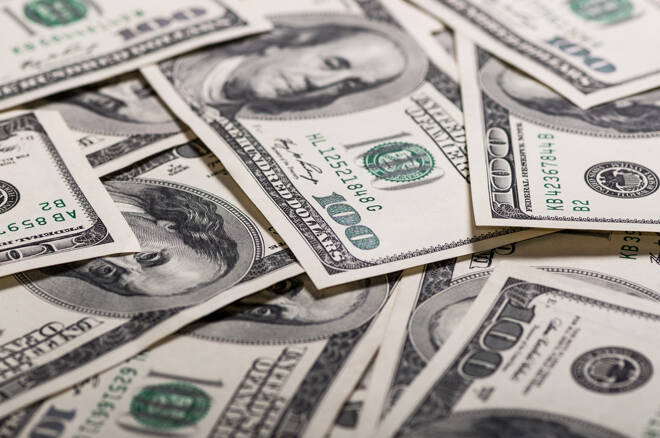Advertisement
Advertisement
U.S. Dollar at Center of Volatile Trading Week
By:
If you like volatility then the Forex market was the place to be last week. The price action featured trend and counter-trend moves. Wicked two-sided
If you like volatility then the Forex market was the place to be last week. The price action featured trend and counter-trend moves. Wicked two-sided trades, break outs, break downs, and risk-on and risk-off scenarios. The center of it all was the U.S. Dollar. Despite the wild swings, the Greenback was able to finish slightly higher for the week.
The September U.S. Dollar Index finished the week at 93.359, up 0.403 or +0.43%.
The U.S. Dollar climbed early in the week on increased demand for higher risk assets. The rally was fueled by reduced concerns over tensions between the United States and North Korea. So-called safe currencies such as the Japanese Yen and the Swiss Franc declined after North Korea said it had delayed a decision on a plan to fire missiles at the U.S. Pacific territory of Guam.
This news helped ease investor worries about the risk of a conflict between the United States and North Korea, improving sentiment toward riskier assets.
The dollar may have also been supported by hawkish comments by New York Fed President William Dudley who said in an interview that he favored another interest rate hike this year if the economic conditions evolved in line with his expectations.
Stronger-than-expected U.S. Retail Sales also helped underpin the dollar. The Greenback was also supported by speculation that European Central Bank chief Mario Draghi would not use his Jackson Hole appearance to signal policy change by the central bank.
The U.S. Dollar Index hit its high for the week at 94.145 on August 16 mostly in reaction to the release of dovish Fed meeting minutes. The dollar went on the defensive after the minutes from the Federal Reserve’s last policy meeting showed policymakers were increasingly wary of recent softness in inflation and could delay a rate hike.
Besides the Fed minutes, the dollar was also pressured by political turmoil in Washington. President Trump’s missteps continued to lose him support from Congress and his own Republican Party. This raised concerns that he would not be able to implement any part of his financial agenda including tax reform and increased infrastructure spending.
New Zealand Dollar
The New Zealand Dollar posted a two-sided trade, erasing most of its earlier losses before finishing only slightly lower for the week.
The NZD/USD settled at .7310, down 0.0002 or -0.02%.
The economic news from New Zealand was positive. Quarterly Retail Sales were up 2.0% and Core Retail Sales grew 2.1%. Quarterly PPI Input was up 1.4%. Quarterly PPI Output was up 1.3%. Both numbers were higher than the forecast.
Australian Dollar
The Australian Dollar also posted a two-sided trade, but managed to close higher after trading lower early in the week. The price action was influenced by domestic news, the Reserve Bank of Australia and investor sentiment.
The RBA meeting minutes said the central bank was pleased with the economy, but not enough to raise interest rates. It went on to say that its positive economic projections were not likely if the Australian Dollar remained at current price levels.
Finally, the Australian Employment Change report showed the economy added 27.9K jobs in July, higher than the 19.8K estimate. The Unemployment Rate was slightly lower at 5.6%. While impressive, these figures were not likely to change the RBA’s neutral stance.
Japanese Yen
The Dollar/Yen finished higher for the week, but the price action was tumultuous. The price action was monthly dictated by the direction of U.S. Treasury yields which were all over the map last week due to the news events and the economic data.
The USD/JPY settled at 109.192, up 0.039 or +0.04%.
Risk-on and Risk-off sentiment basically dictated the price action as well as the U.S. Government Bond and Japanese Government Bond interest rate differential.
About the Author
James Hyerczykauthor
James Hyerczyk is a U.S. based seasoned technical analyst and educator with over 40 years of experience in market analysis and trading, specializing in chart patterns and price movement. He is the author of two books on technical analysis and has a background in both futures and stock markets.
Advertisement
